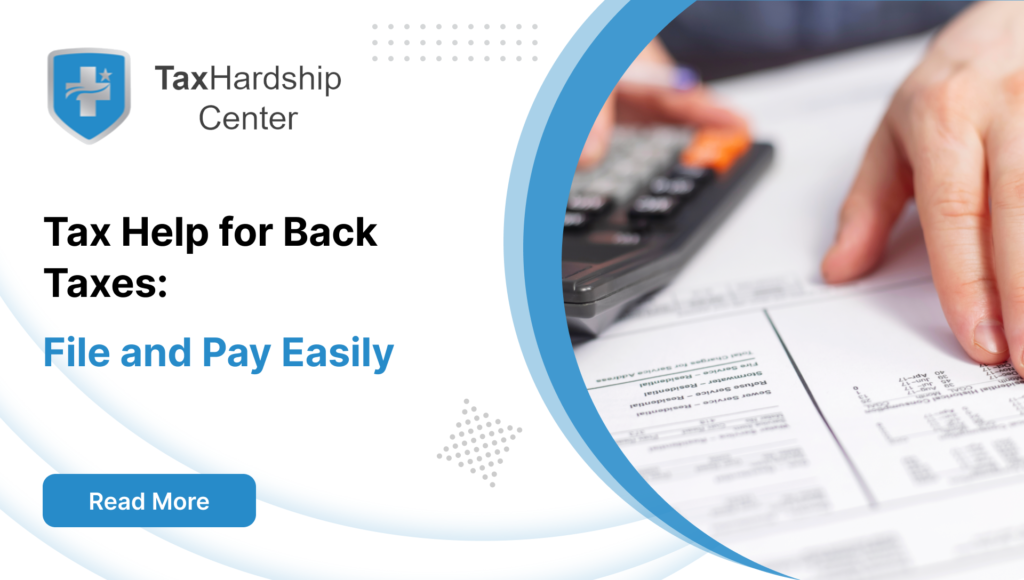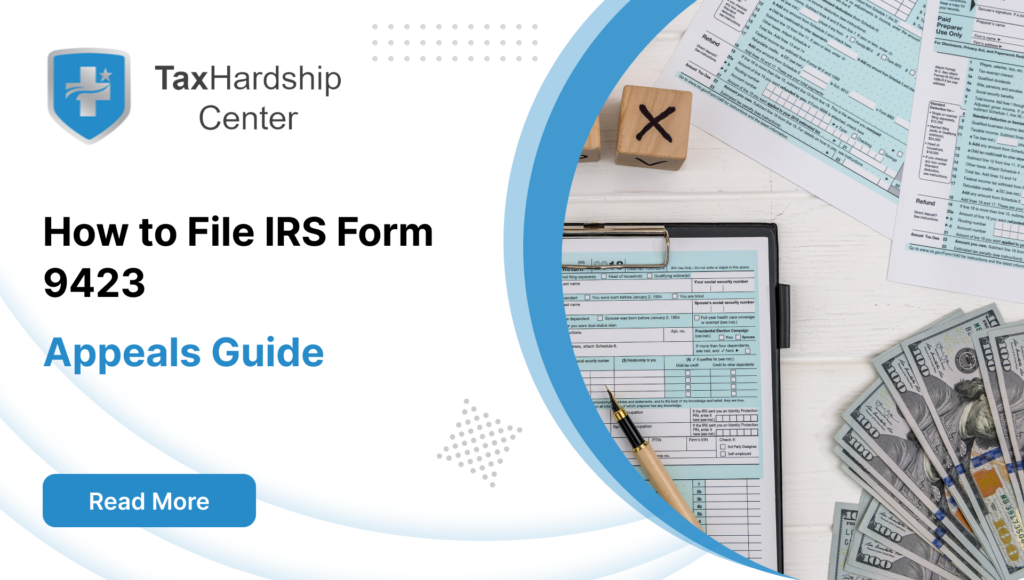Five hundred twenty-nine plans are powerful tools for families looking to save for future educational expenses. They offer substantial tax benefits that can significantly impact long-term savings and estate planning. This guide breaks down the tax advantages, types of plans, and other essential details about 529 plans to help you maximize your savings.
What Is a 529 Plan?
A 529 plan is a tax-advantaged savings plan designed to encourage saving for future education expenses. It’s a popular tool for families to save for a child’s education while taking advantage of tax benefits. One of the primary benefits is tax-free growth, meaning your investments grow without tax. Additionally, when withdrawals are made for qualified education expenses, those withdrawals remain untaxed, maximizing the value of your savings.
Tax Hardship Center: Your 529 Plan Tax Relief Partner
Understanding the tax complexities of 529 plans can be challenging. Get clarification on the tax benefits, contribution limits, or state-specific advantages. Tax Hardship Center is here to simplify your education savings journey and provide peace of mind.
We specialize in untangling the tax aspects of 529 plans, including:
- Maximizing Tax-Free Growth: We’ll help you ensure your 529 plan grows tax-free and guide you through the best practices for tax-free withdrawals on qualified education expenses.
- State Tax Benefits: Navigating state-specific tax deductions and credits can be tricky. Our experts will ensure you take full advantage of your state’s offerings.
- Audit Support: Are you concerned about an IRS audit related to your 529 plan contributions or withdrawals? We’re here to provide expert assistance and help you resolve tax issues smoothly.
- Estate Planning Strategies: Want to use your 529 plan contributions to reduce your taxable estate? We’ll develop a tax-efficient plan to help you meet your estate planning goals.
Don’t let the complexities of 529 plan taxes stress you out. Focus on securing your child’s educational future – we’ll handle the tax details.
Schedule a free consultation with the Tax Hardship Center today and enjoy peace of mind while maximizing your tax benefits!
Understanding 529 Plans
Five hundred twenty-nine plans are available in every state, and though the core benefits remain consistent, individual state plans can offer different perks. These flexible plans cover various educational needs—from K-12 tuition to vocational school expenses. This flexibility allows families to use the plan for various educational purposes, giving you control over how the funds are spent based on your child’s or beneficiary’s education path.
Prepaid Tuition Plans
Prepaid tuition plans are a smart way to lock in current tuition prices for future education. This feature protects families from rising education costs and provides financial certainty. Though offered by fewer states, these plans are ideal for families primarily concerned about future tuition hikes. By purchasing future tuition credits at today’s rates, you effectively shield yourself from the unpredictability of rising college costs.
Education Savings Plans
The common education savings plans allow you to invest your contributions in various portfolios like a retirement account. These investments grow tax-free, and the portfolio options range from conservative to aggressive depending on your financial goals and risk tolerance. Families looking for long-term growth often choose this option to make the most of their contributions, taking advantage of potential stock market gains while saving for education.
529 Plans Offer Unsurpassed Income Tax Breaks
529 plans offer significant income tax benefits, including:
- Tax-free contributions: Contributions to a 529 plan are generally not subject to federal income tax. This means you can contribute to the account without affecting your taxable income.
- Tax-deferred growth: Earnings within the 529 plan grow tax-free. This allows your investments to compound without being eroded by annual taxes.
- Tax-free withdrawals for qualified educational expenses: When funds are withdrawn from the 529 plan to pay for eligible educational expenses, such as tuition, fees, and room and board, the withdrawals are generally tax-free.
These tax benefits make 529 plans a desirable option for saving for education. Few other investment vehicles offer such significant tax advantages, making them popular for parents and individuals seeking to fund education costs.
State Tax Breaks
In addition to federal tax benefits, many states offer additional tax benefits for contributing to 529 plans, including:
- Tax deductions: Some states allow you to deduct your contributions to a 529 plan from your taxable income. This can significantly reduce your overall tax bill.
- Tax credits: Other states provide tax credits for contributions to 529 plans, which can directly lower one’s tax liability.
Examples of states with favorable 529 plan tax benefits include:
- Illinois: Offers a tax credit of up to $10,000 annually, one of the highest maximum amounts among the states listed.
- Nebraska: Provides a tax credit of up to $10,000 annually, making it highly competitive.
- Oklahoma: Offers a tax credit of up to $10,000 per year, similar to Illinois and Nebraska.
- Pennsylvania: While it offers a tax deduction rather than a credit, the maximum deduction of $10,000 per year is significant.
- Utah: Provides a tax credit of up to $10,000 annually, making it another attractive option.
Estate Planning Benefits of 529 Plans
529 plans offer several estate planning advantages:
- Gift tax exclusion: Contributions to a 529 plan can qualify for the annual gift tax exclusion, allowing you to give up to $17,000 per beneficiary per year ($34,000 for married couples) without incurring gift tax. This can be a valuable strategy for reducing your taxable estate.
- Transfer of wealth: By funding a 529 plan, you can effectively transfer wealth to your beneficiaries for their education expenses. This can help alleviate the financial burden of higher education costs.
- Flexibility: 529 plans offer flexibility in terms of beneficiaries. If the original beneficiary doesn’t use the funds for education, the funds can be transferred to another eligible beneficiary.
- Potential tax benefits: Depending on your state, you may be eligible for state income tax deductions or credits for contributions to a 529 plan.
Consider incorporating 529 plans into your estate planning strategy to maximize the benefits for both you and your beneficiaries.
Rollover to Roth IRA
Starting in 2024, 529 plans have become even more versatile with the introduction of the rollover to Roth IRA provision. This new feature offers families greater flexibility and peace of mind by allowing them to:
- Utilize unused funds: If your child doesn’t use all the funds from the 529 plan for qualified education expenses, you can now roll over the remaining balance into a Roth IRA.
- Avoid penalties: This eliminates the need to worry about incurring penalties for unused funds.
- Save for retirement: Rolling over the funds into a Roth IRA allows you to contribute to your retirement savings, potentially growing tax-free.
- Maximize your savings: This provides an additional opportunity to save for your child’s education and retirement.
By taking advantage of the rollover to Roth IRA option, you can maximize your 529 plan investments and ensure that your hard-earned savings are used to their full potential.
High Contribution Limits
Another advantage of 529 plans is their generous contribution limits. Many states allow contributions exceeding $300,000 per beneficiary, providing ample room for growth and savings. This makes 529 plans one of the most efficient ways to save for education and offers a reliable option for larger financial gifts to family members without incurring taxes or penalties.
Account Control and Flexibility
The flexibility and control offered by a 529 plan are significant. As the account owner, you maintain control of the funds even after they are gifted to the beneficiary. This control ensures the funds are used as intended for tuition, room and board, or other qualified education expenses. If the initial beneficiary doesn’t require the funds, you can transfer the account to another family member without penalty.
Ease of Use and Low Maintenance
529 plans are designed to be low maintenance. Once you’ve set up your account and selected your investment options, you don’t need to manage the day-to-day details actively. This simplicity is particularly appealing for busy individuals who want to save for education without the hassle of frequent management.
Simplified Tax Reporting
Tax reporting for 529 plans is streamlined. Contributions and withdrawals are easily reported, reducing the paperwork to manage your finances. This ease is especially helpful during tax season, where complicated reporting for other accounts can be burdensome.
Eligibility and Accessibility
One of the best aspects of 529 plans is that they are accessible to everyone. No income limitations allow families at all income levels to contribute and benefit. Whether you’re contributing a small amount or making larger gifts, the plan allows anyone to save for education tax-efficiently.
Conclusion: Take Control of Your Educational Future
A 529 plan is one of the best ways to secure your family’s educational future while enjoying significant tax benefits. Whether you are saving for a child’s college education, estate planning, or simply want to make the most of tax-free growth, 529 plans offer unparalleled advantages. Take the time to explore your state’s offerings and consider how a 529 plan can fit into your financial strategy. For personalized advice, consult a tax professional or contact us for more information on how to start saving.
Why Tax Hardship Center?
1. Hassle-Free Assistance:
Say goodbye to sleepless nights and endless tax-related stress. At the Tax Hardship Center, we believe in simplifying the complex. Our team of experts is dedicated to guiding you through every step of the process, ensuring that your tax concerns are met with precision and care.
2. 14-Day Money Back Guarantee:
We’re so confident in our ability to ease your tax worries that we offer a 14-day money-back guarantee. If, for any reason, you’re not satisfied with our service, we’ll gladly refund your investment. Your peace of mind is our top priority!
3. Free Consultation:
Are you curious about how we can transform your tax experience? Book a free consultation now! Our team will assess your situation, answer your questions, and provide free insights tailored to your needs.
4. Nationwide Coverage:
No matter which corner of the United States you call home, the Tax Hardship Center covers you. We proudly serve all 50 states, bringing our expertise to your doorstep. Wherever you are, our commitment to excellence follows.
FAQs:
1. What is the primary benefit of a 529 plan?
The main advantage of a 529 plan is its tax-free growth and tax-free withdrawals for qualified education expenses. This allows your savings to grow without tax and ensures that funds can be withdrawn for educational costs without incurring taxes, maximizing the plan’s efficiency.
2. Can I use a 529 plan for more than just college expenses?
Yes, 529 plans can be used for various educational expenses, including K-12 tuition, vocational schools, and apprenticeship programs. This flexibility makes 529 plans suitable for multiple education paths, not just college.
3. Do all states offer tax benefits for 529 plans?
While many states offer tax deductions or credits for contributions to a 529 plan, the specifics differ by state. It’s important to check your state’s tax laws to benefit from potential state tax advantages.
4. What happens if my child doesn’t use all the funds in the 529 plan?
Starting in 2024, unused 529 funds can be rolled over into a Roth IRA, allowing the funds to be repurposed for retirement savings. This ensures that leftover funds are still utilized beneficially without tax penalties.
5. Is there a limit on how much I can contribute to a 529 plan?
Contribution limits for 529 plans vary by state, but many allow contributions over $300,000 per beneficiary. This makes 529 plans an excellent option for families saving large amounts for education or as a tax-efficient gifting tool.








